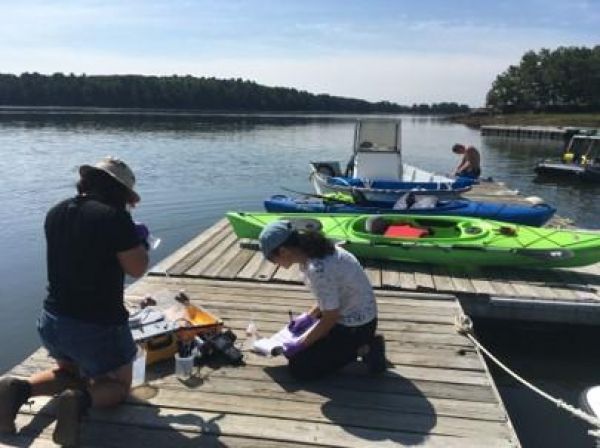Researchers at the University of New Hampshire have conducted two of the first studies in New England to collectively show that toxic man-made chemicals called PFAS (per-and polyfluoroalkyl substances), found in everything from rugs to product packaging, end up in the environment differently after being processed through wastewater treatment facilities—making it more challenging to set acceptable screening levels.
“PFAS are persistent substances that are not easily broken down and have been linked to adverse health effects,” said Paula Mouser, associate professor of civil and environmental engineering. “They are found in a wide variety of industrial, commercial and medicinal products and can end up in the body, human waste and the environment. If not managed correctly, they can be further distributed around the environment in landfills, waterways and even stabilized biosolids could be applied to agricultural fields as fertilizers.”
The researchers looked at the journey of 24 different PFAS through six New Hampshire wastewater treatment facilities, including those along the Great Bay Estuary near the N.H. Seacoast, to examine how they are distributed after being treated. PFAS come in two forms, long-chain and short-chain, which refers to the number of carbon atoms attached to fluorine in the compounds. In their first study, recently published in the journal Environmental Science: Processes and Impacts, the researchers found that short-chain PFAS ended up in the facility liquid, or effluent, while long-chain PFAS were more abundant in the sludge due to their higher affinity toward solids.
Read more at University of New Hampshire
Image: UNH researchers sampling emerging contaminant in the Great Bay Estuary. (Credit: UNH)


